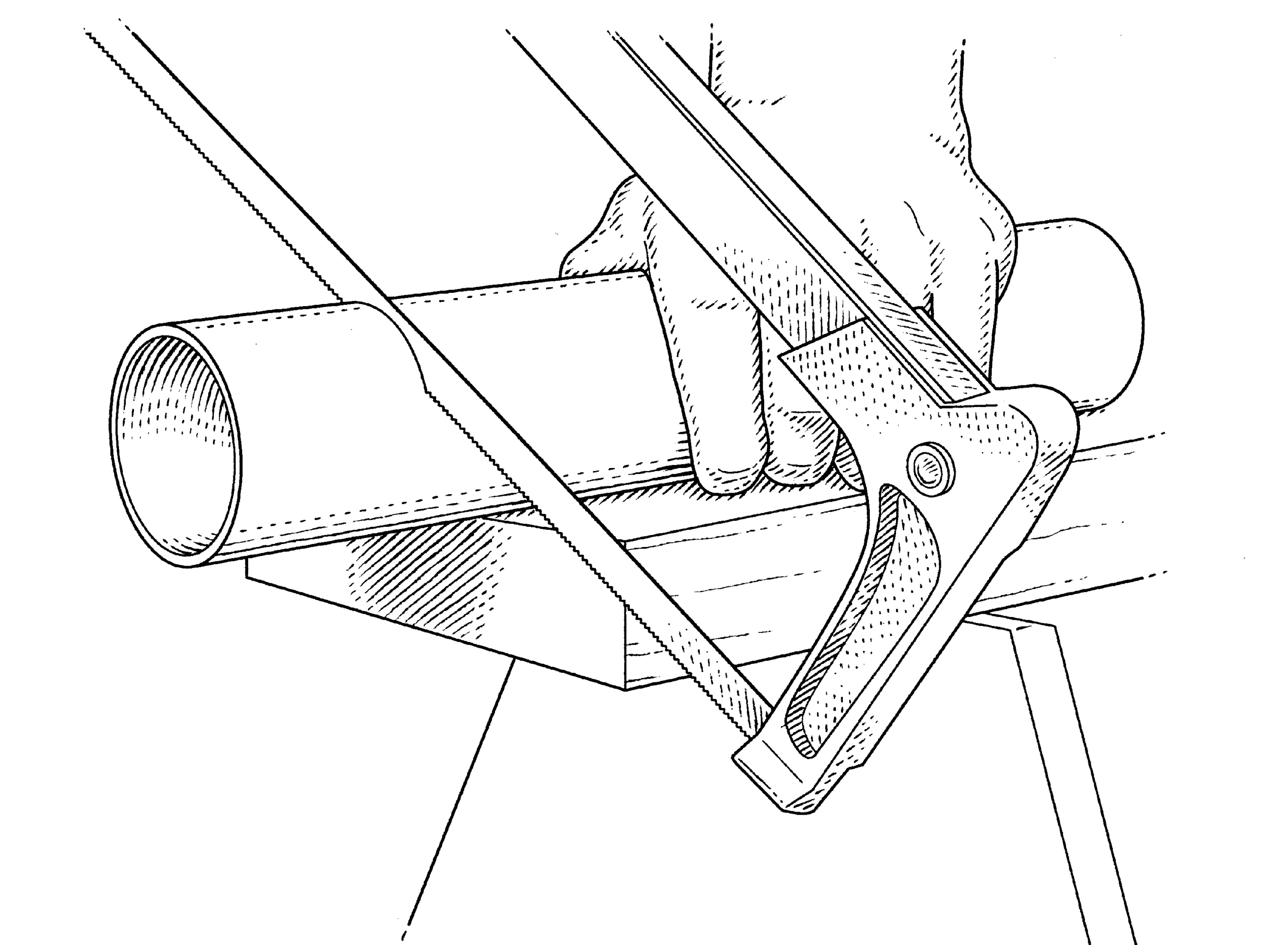We may be compensated if you purchase through links on our website. Our team is committed to delivering honest, objective, and independent reviews on home products and services.
PVC, or polyvinyl chloride, is a versatile plastic material widely used in plumbing and construction. PVC pipe joints are created through a chemical welding process. The solvent cement temporarily melts a thin layer of PVC, which then resolidifies to form a seamless, waterproof seal. While the process is relatively straightforward, it requires attention to detail and proper technique to avoid costly mistakes to the piping or the entire system down the road. This guide will walk you through how to glue PVC pipes, whether you’re repairing a leaky pipe or installing a new drainage system.
Key Considerations for PVC Piping
PVC pipes are durable, affordable, and corrosion-resistant, making them ideal for many residential and commercial builds. PVC pipes are commonly used for:
- Drain and vent systems in residential plumbing
- Water supply lines
- Irrigation systems
- Central vacuum systems
- Electrical conduits
PVC Pipes and Fittings
PVC pipes and fittings come in different schedules (thicknesses) and diameters, so it’s important to select the appropriate size and schedule for your project. Also, make sure all components are clean and debris-free before you start working with PVC pipes.
In the video below, plumbing and heating expert Richard Trethewey discusses how to identify PVC pipes and fittings.
PVC Primer and Cement
PVC primer prepares the surface for bonding, while PVC cement creates the weld. Choose products specifically designed for the type and size of PVC you’re working with.
Safety Equipment
Make sure to wear appropriate safety equipment to protect you from any chemicals:
- Safety goggles
- Chemical-resistant gloves
- Respirator mask (for use in poorly ventilated areas)
- Long-sleeved shirt and pants
Additional tools you’ll need include:
- Tape measure
- Marker or pencil
- Hacksaw or PVC pipe cutter
- Utility knife
- Clean, dry rags
Before You Start
Set up your work area in a well-ventilated, well-lit space, preferably outdoors or near an open window. Cover your work surface with a drop cloth or newspaper to protect it from spills and make cleanup easier. If you’re working on an existing plumbing system, turn off the water supply and drain the pipes before beginning. Pay close attention to every step to minimize mistakes —once the weld sets, the only way to change it is to cut it off and fit a new weld.
Step-by-Step Process To Glue PVC Pipe
Follow these steps carefully to create strong, leak-proof PVC joints.
Step 1: Measure and cut
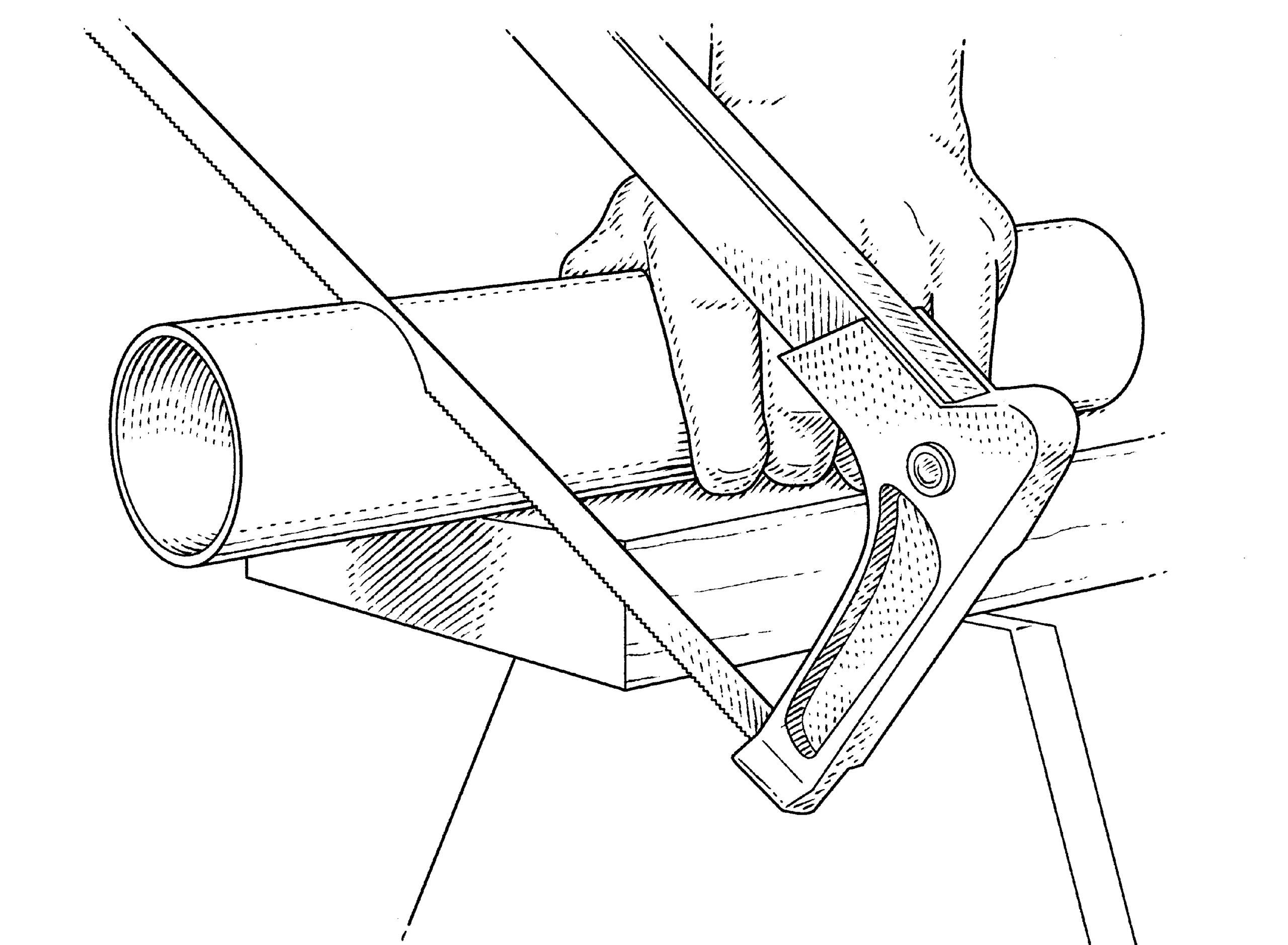
To ensure that the pipe will be fully seated in its fittings, measure the distance between the shoulders on the fittings at each end of the pipe. Make sure to measure accurately so that all of the pieces fit together properly. As the saying goes, “measure twice, cut once.”
Transfer that measurement to the pipe and make a straight cut with a hacksaw. Scrape the inside of the cut smooth with a utility knife, removing any burrs or rough edges.
Step 2: Dry fit
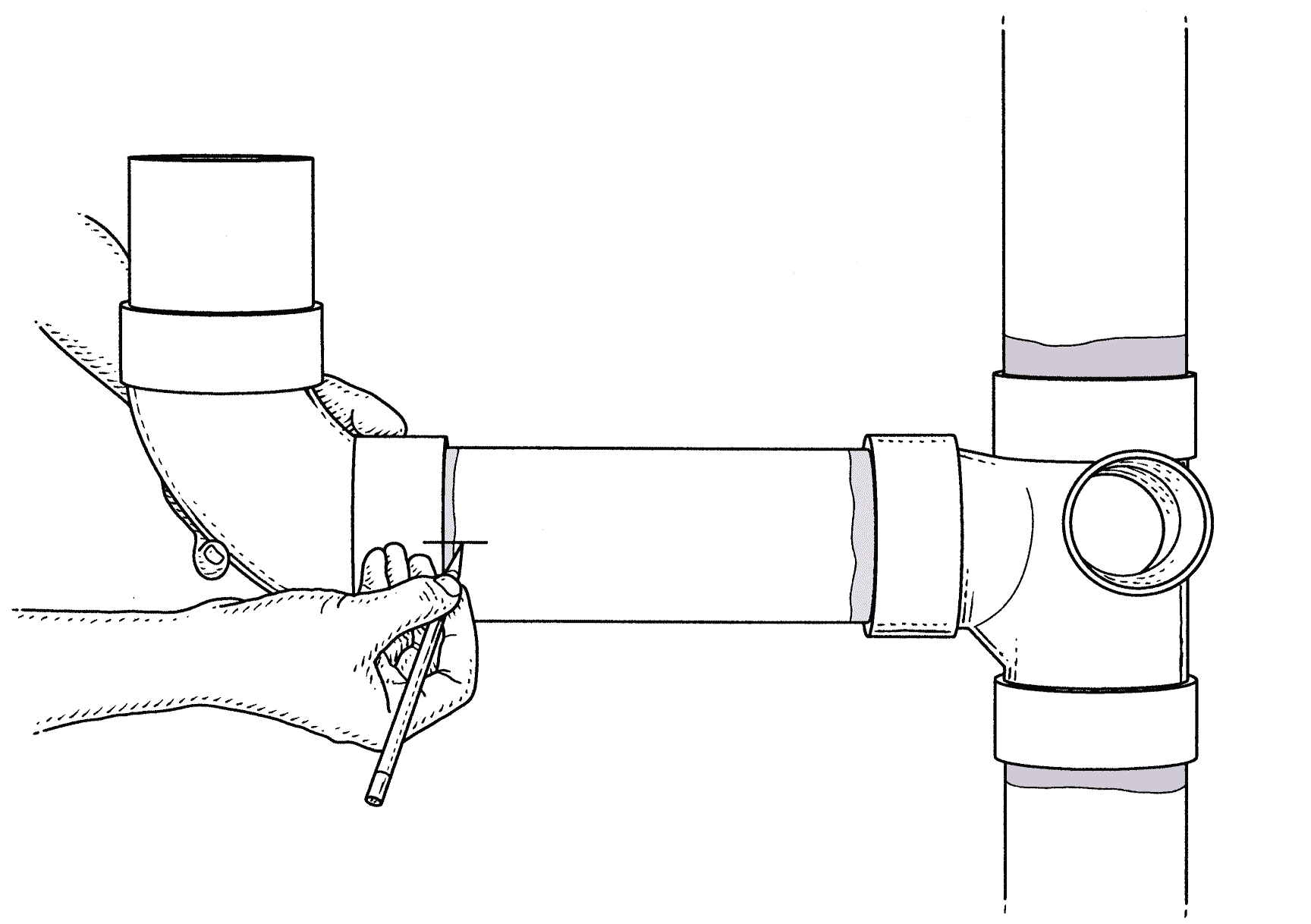
Before applying any chemicals, assemble all the pieces to make sure the pipe is the correct length and to check the fit and alignment. This step is especially important for complex configurations or when working with elbows and other angled fittings. Make reference marks on the pipe and fitting to indicate the correct orientation.
Step 3: Prime
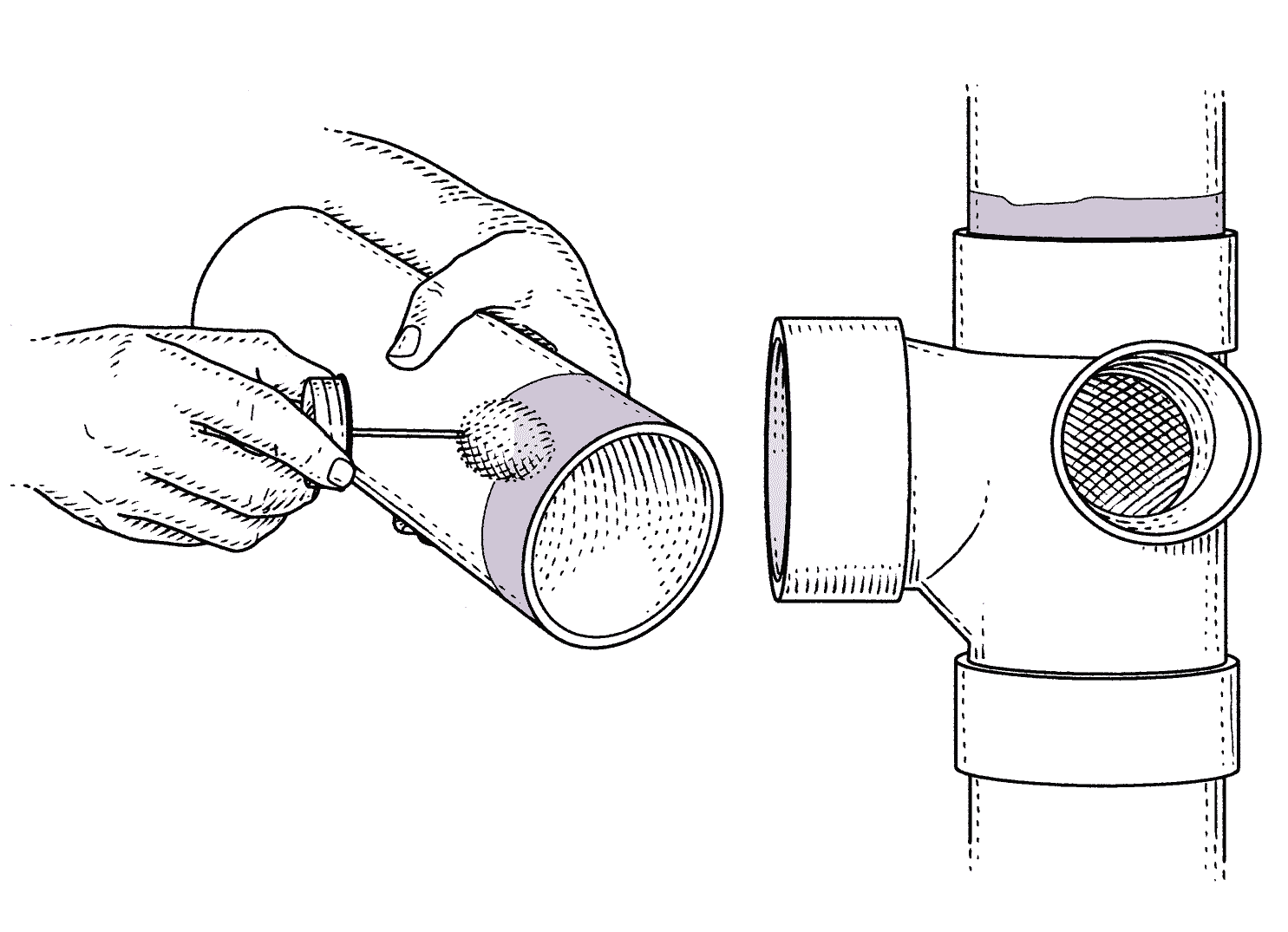
Using the applicator brush attached to the primer can lid, spread cement primer over the outside of the pipe and the inside of the fitting where the pieces will overlap. The primer softens and cleans the PVC surface, preparing it for a strong bond. Work quickly, as the primer evaporates rapidly.
Step 4: Glue
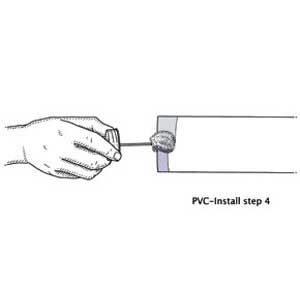
Immediately after priming, apply a generous coat of PVC cement to the primed areas on the inside of the fitting and to the outside of the pipe. Use long, even strokes to ensure complete coverage. The cement should be applied quickly to prevent it from drying before the joint is assembled.
Step 5: Push and twist
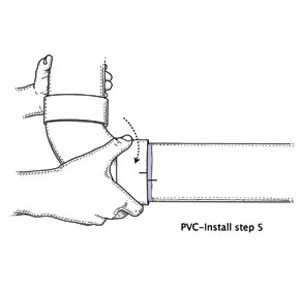
Slide the pipe into the fitting with a slight twisting motion until it bottoms out against the fitting’s shoulder, then give it a ¼-inch turn to spread the glue evenly and speed its cure.
If you’re attaching a fitting, push it in with the reference marks slightly out of register and turn the fitting to align the marks. Hold for 30 seconds to allow the initial bond to set, then wipe up any excess cement with a dry rag.
Step 6: Let it dry
While the initial bond forms quickly, full curing takes longer. Allow at least 15 minutes before handling the joint and 2 hours before applying any pressure. For larger diameter pipes or in cooler temperatures, give the joints more time to dry. Consult the cement manufacturer’s instructions for specific curing times.
Common Mistakes To Avoid When Gluing PVC
Here are some common mistakes that people make when gluing PVC pipes:
- Using too little cement: This can result in weak joints and potential leaks.
- Allowing cement to dry before joining: Work quickly to assemble pieces while the cement is still wet.
- Failing to properly clean and prime surfaces: This can lead to poor adhesion.
- Twisting fittings after they’re fully seated: This can break the initial bond.
- Neglecting to check for proper fit before gluing: Ill-fitting joints won’t seal properly.
Tips for a Strong, Leak-Proof PVC Bond
Follow these tips to construct better-quality PVC fittings for your project.
Choosing the Right PVC Cement
Select a PVC cement that works for your pipe size and application. Use a heavy-bodied cement for larger pipes or pressurized systems. A medium-bodied cement will work for smaller, non-pressurized applications.
Proper Application Techniques
Apply cement in smooth, even strokes to avoid puddles or dry spots and thoroughly cover all of the bonding surfaces. When joining pipes together, use firm, consistent pressure to fully seat the pipe in the fitting.
Working in Different Weather Conditions
Temperature and humidity can impact the cement drying time. In hot weather, work faster as the cement will set more quickly. In cold conditions, allow extra time for curing and setting. If you’re working in high humidity, wipe surfaces with a clean, dry cloth before applying primer and cement for better adhesion.
Troubleshooting PVC Glue Issues
Here’s how to address common problems with DIY PVC construction.
Dealing with Weak Bonds
If you suspect a weak bond, the safest option is to cut out the joint and redo it. Attempting to reinforce a weak joint with additional cement is not recommended and may lead to future leaks.
Fixing Misaligned Joints
Unfortunately, once PVC cement sets, the only way to correct misalignment is to cut out the joint and start over.
Call for Help
For difficult or complex plumbing projects or if you’re not confident your ability to create reliable joints, consult with or hire a professional plumber. With their experience, they can do a quality job and make sure that your PVC pipe installation meets local building codes.
Safety When Working With PVC Glue
Safety should always be a priority when working with PVC chemicals.
Proper Ventilation
Work in a well-ventilated area to avoid inhaling fumes. If working indoors, use fans to circulate air, and consider wearing a respirator mask for further protection.
Handling and Storing PVC Chemicals
Keep PVC primer and cement away from heat sources and open flames, as they are highly flammable. Store chemicals in a cool, dry place out of reach of children and pets. Always replace caps tightly after use.
Alternative Methods for Joining PVC Pipes
While chemical welding is the most common method for joining PVC, there are other methods that can be used for some applications.
Mechanical Couplings
Mechanical couplings, such as compression fittings and rubber couplings with hose clamps, can be used for temporary connections or situations where chemical bonding isn’t feasible.
Heat Fusion
In some industrial applications, heat fusion techniques can join PVC pipes. This method requires specialized equipment and is not typically used or recommended for residential plumbing.
Maintenance and Longevity of Glued PVC Joints
PVC pipe is a durable and adaptable material, and properly glued PVC joints can last for decades without issues. However, poor maintenance or misuse can lead to plumbing problems or even structural complications. Make sure to inspect your plumbing system often to catch potential problems early.
Look for signs of stress, such as cracks or discoloration around joints. If you suspect a leak, address it as soon as you can to prevent water damage. For long-term maintenance, avoid exposing PVC pipes to direct sunlight, which can degrade the material over time. If pipes are installed outdoors, consider painting them with UV-resistant paint or covering them with insulation.
